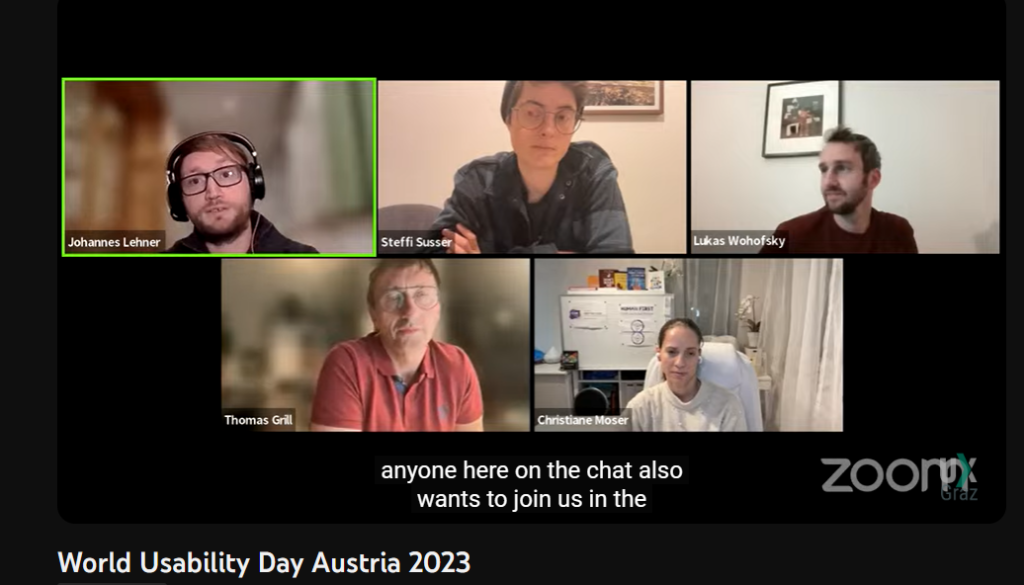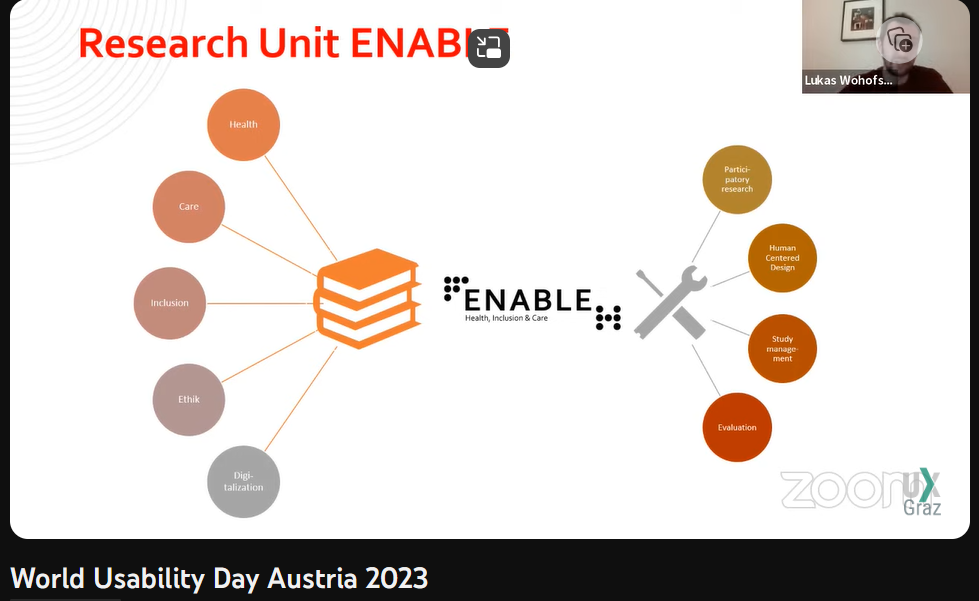
In the digital age, creating products that cater to a diverse range of users has become paramount. World Usability Day serves as an ideal platform for delving into the nuances of accessibility and inclusive design. Recently, UX Graz organized a hybrid event that featured a talk by Steffi Susser, a freelance UX consultant, who shared invaluable insights on this essential topic. Her presentation emphasized the significance of enabling users with various abilities and disabilities to navigate and interact with products, and she was just one of the experts contributing to this enlightening event. In this blog post, we will explore the key takeaways from Steffi Susser’s talk and the broader discussions that took place during this celebration of World Usability Day.
A Glimpse into World Usability Day
The event, organized by UX Graz, celebrated World Usability Day, providing a platform for professionals and enthusiasts to come together and discuss the critical facets of design that revolve around usability, accessibility, and inclusion. The online format broader participation, ensuring a wide-reaching and inclusive conversation.
The Power of Inclusive Design: Insights from Steffi Susser’s Talk and More

Steffi Susser’s Talk
Steffi Susser’s talk was a highlight of the event. She passionately articulated the importance of inclusive design, emphasizing that it goes beyond merely complying with guidelines. Inclusion, she asserted, is about fostering an environment where all individuals, regardless of their unique differences, feel welcomed, respected, supported, and valued. Her insights on the topic shed light on how designers and creators can go the extra mile to ensure their products resonate with users on a deeper level.
Accessibility vs. Inclusive Design
Steffi Susser’s talk also drew a clear distinction between accessibility and inclusive design. While accessibility focuses on making a design usable by everyone, inclusive design takes it a step further. Inclusive design aims not only to be usable but to be so appealing that everyone desires to use it. It’s a journey that transcends the realm of objective measurements and delves into the subjective and emotional aspects of design, making it a complex and fascinating field.
The Complexity of Inclusive Design
Steffi’s presentation highlighted the intertwined nature of inclusive design. She pointed to real-world examples, such as web forms, which are commonly used online but can present exclusionary challenges. These forms can deter users by requesting unnecessary data or enforcing mandatory fields. Inclusive design, in such cases, means providing a spectrum of choices and considering the multifaceted dimensions of diversity, including culture, language, ethnicity, sexual orientation, family status, religion, and spiritual beliefs.
Diversity in Design
Diversity, Steffi emphasized, encompasses various facets of being human, and designers play a crucial role in promoting inclusivity. Factors such as contrast ratios, color blindness testing, resizable fonts, and support for screen readers were discussed as ways to ensure a design is inclusive. Avoiding autoplay, scrutinizing the necessity of animations, allowing sufficient time for user interactions, employing gender-fair language, collecting only essential data, and avoiding stereotypes all contribute to the overall inclusiveness of a design.
Inclusive Design: A Piece of a Larger Puzzle
Steffi Susser views accessibility as “just a piece of the broader puzzle” that is inclusive design. While fundamental, accessibility does not stand alone; it is part of a holistic approach that addresses the complex and multifaceted needs of users.
Steffi Susser’s talk on inclusive design holds particular relevance for me as an interaction designer but more importanly for my research working on the master’s thesis focused on eHealthcare app solutions. Her insights shed light on the importance of creating designs that resonate with diverse user groups, a vital consideration in the healthcare sector. By delving into the complexities of inclusive design and understanding the emotional aspects that drive user engagement, we can equip ourselves with valuable knowledge to enhance the usability and appeal of our eHealthcare app solution. This understanding will not only contribute to the success of my master’s thesis but also empower me to design a solution that is genuinely tailored to the needs and preferences of a wide range of healthcare app users.

A Glimpse into Research by Lukas Wohofsky
The event also featured research by Lukas Wohofsky, co-lead of the research unit ENABLE for health and inclusion care at FH Carinthia. His work, in collaboration with Daniela Kraine and Sascha Fink, showcased the application of human-centered design in research on their initiative for “inclusion through cooperation: potentials of participatory research in the field of autism”. They underscored the ethical principles and best practices for involving users, emphasizing the importance of valuing data, employing gender-sensitive research design, and building trust with research participants.
Panel Discussion on Accessibility and Inclusion
The event concluded with an engaging panel discussion on accessibility and inclusion. This panel brought together experts from various backgrounds, including Steffi Susser, Lukas Wohofsky, Thomas Grill, and Christiane Moser. The discussion, moderated by Johannes Lehner, provided a rich exchange of ideas and insights, offering a comprehensive perspective on the ever-evolving field of accessibility and inclusive design.
To gain further insights from this informative event, you can watch the recorded panel discussion on YouTube: https://www.youtube.com/watch?v=zw5MG2JP0W8